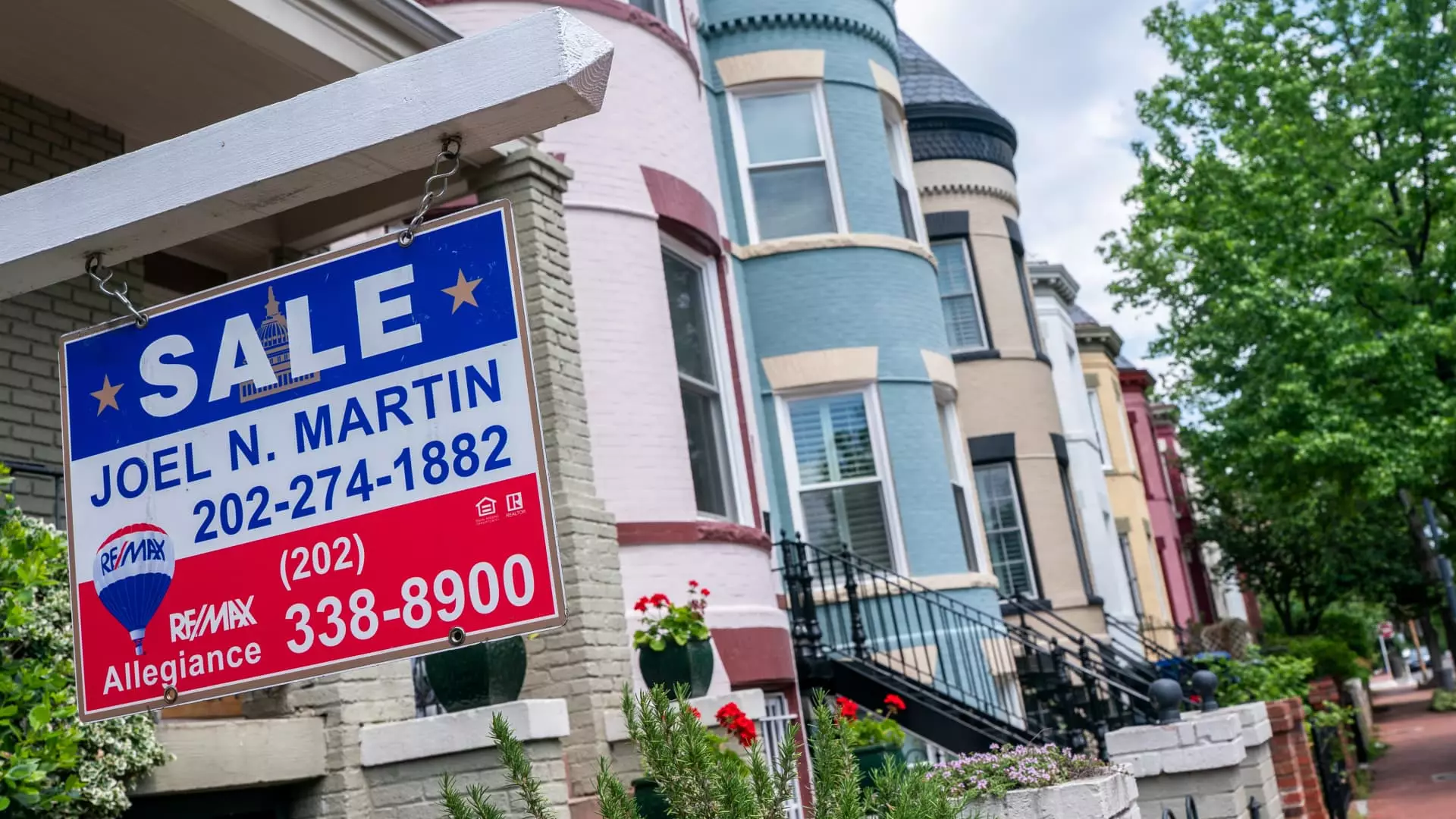The spring housing market is not just struggling; it is floundering in a sea of rising interest rates and increasingly skeptical consumers. An alarming decline of 0.5% in sales of previously owned homes in April, bringing the total to an annualized rate of 4 million units, raises serious concerns about our economic foundation. This downturn, reported by the National Association of Realtors (NAR), marks the slowest sales pace for April since 2009—a time when the financial landscape was riddled with vulnerabilities. Alarmingly, the figures also reveal a 2% decrease from last April, debunking economists’ optimistic expectations of a 2.7% increase. It’s worth questioning how much longer we can ignore the dissonance between the economy’s growth—the addition of seven million jobs—and the staggering decline in real estate activity.
The Elusive Downturn in Mortgage Rates
Lawrence Yun, NAR’s chief economist, has described the current housing market as operating at just 75% of its normal pre-pandemic vitality. The disheartening reality is the pent-up demand for housing remains unrealized, left simmering under the surface as potential buyers hesitate in response to the escalating mortgage rates. It’s painfully evident that a meaningful drop in interest rates is essential for this demand to transform into tangible sales. One would question whether we’re watching a ticking time bomb, where consumer confidence won’t hold out much longer against persistent financial pressures.
Inventory: A Double-Edged Sword
The housing inventory paradox is particularly notable. A notable 9% increase in available homes month-over-month amounts to a staggering 1.45 million properties on the market at the end of April. This represents a 21% increase from the previous year but still falls short of the six-month supply regarded as a balanced market. The influx of listing could create a cooling effect on prices, yet the current median home price still sits at a historic high of $414,000—a mere 1.8% increase year-over-year. While this points to a slight easing in price pressures, it is hardly the remedy reluctant buyers need in a market where affordability is increasingly out of reach for many.
Buyer Tactics and Market Dynamics
Interestingly, the dynamics within the real estate market appear to be shifting, albeit slowly. With sellers facing the highest inventory levels in five years, buyers now have room to negotiate. The average home sat on the market for 29 days—a sign of changing tides, but one that still feels far too tentative. With first-time buyers consistently accounting for 34% of sales, their struggles for affordability reveal an uncomfortable truth about our society’s approach to housing. At the same time, rising cancellation rates—now hitting 7% of sales—point not only to consumer dissatisfaction but also to a wave of uncertainty affecting potential homeownership dreams.
The Wealth Gap and Different Realities
As the market experiences a significant division between various price segments, we must address how the crisis disproportionately affects lower and middle-income families. Homes priced over $1 million have seen a nearly 6% uptick in sales compared to last year, starkly contrasting with a 4% downturn in properties priced between $100,000 and $250,000. It’s bewildering to see this growing chasm, particularly when one considers the stock market upheavals suggesting that the wealthy are still thriving while the more vulnerable are left struggling for viability in an unforgiving market.
Consumption and a Future at the Margins
Overall, the current housing market dynamics confirm what many of us fear: homeownership—the emblem of the American Dream—may now be a privilege teetering on the brink of unattainability for the average person. As we stand on the edge of the abyss, the question looms: will we allow this disheartening trend to continue unchecked, or will we finally mobilize to ensure that housing is equitably accessible for all? The stakes have never been higher; how we respond in the coming months will shape not only immediate conditions but also the long-term trajectory of housing and economic justice in our country. The need for policy intervention has never been more urgent, lest our societal fabric become irrevocably stained by economic disparities.

